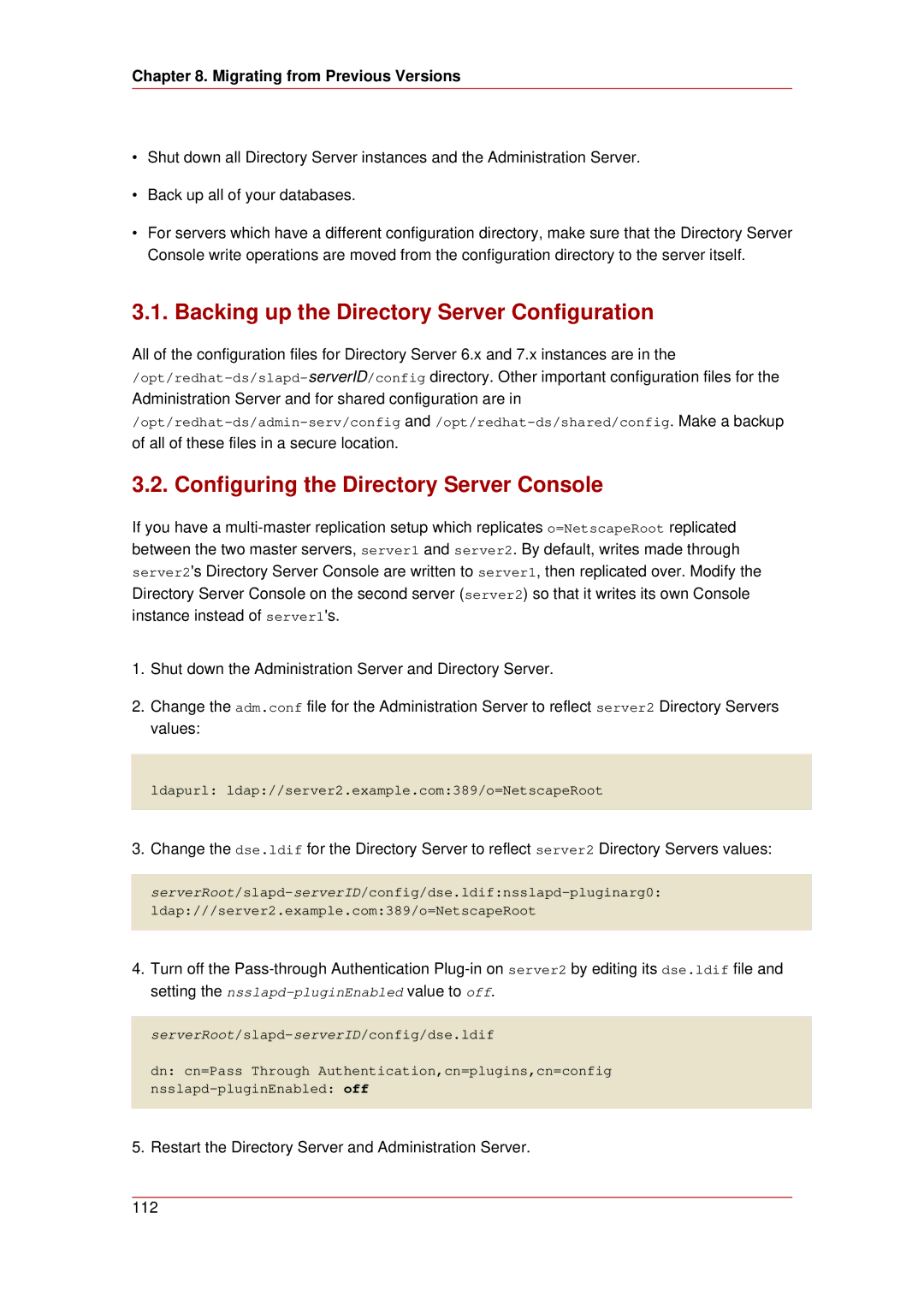
Chapter 8. Migrating from Previous Versions
•Shut down all Directory Server instances and the Administration Server.
•Back up all of your databases.
•For servers which have a different configuration directory, make sure that the Directory Server Console write operations are moved from the configuration directory to the server itself.
3.1. Backing up the Directory Server Configuration
All of the configuration files for Directory Server 6.x and 7.x instances are in
3.2. Configuring the Directory Server Console
If you have a
1.Shut down the Administration Server and Directory Server.
2.Change the adm.conf file for the Administration Server to reflect server2 Directory Servers values:
ldapurl: ldap://server2.example.com:389/o=NetscapeRoot
3.Change the dse.ldif for the Directory Server to reflect server2 Directory Servers values:
4.Turn off the
dn: cn=Pass Through Authentication,cn=plugins,cn=config
5.Restart the Directory Server and Administration Server.
112
